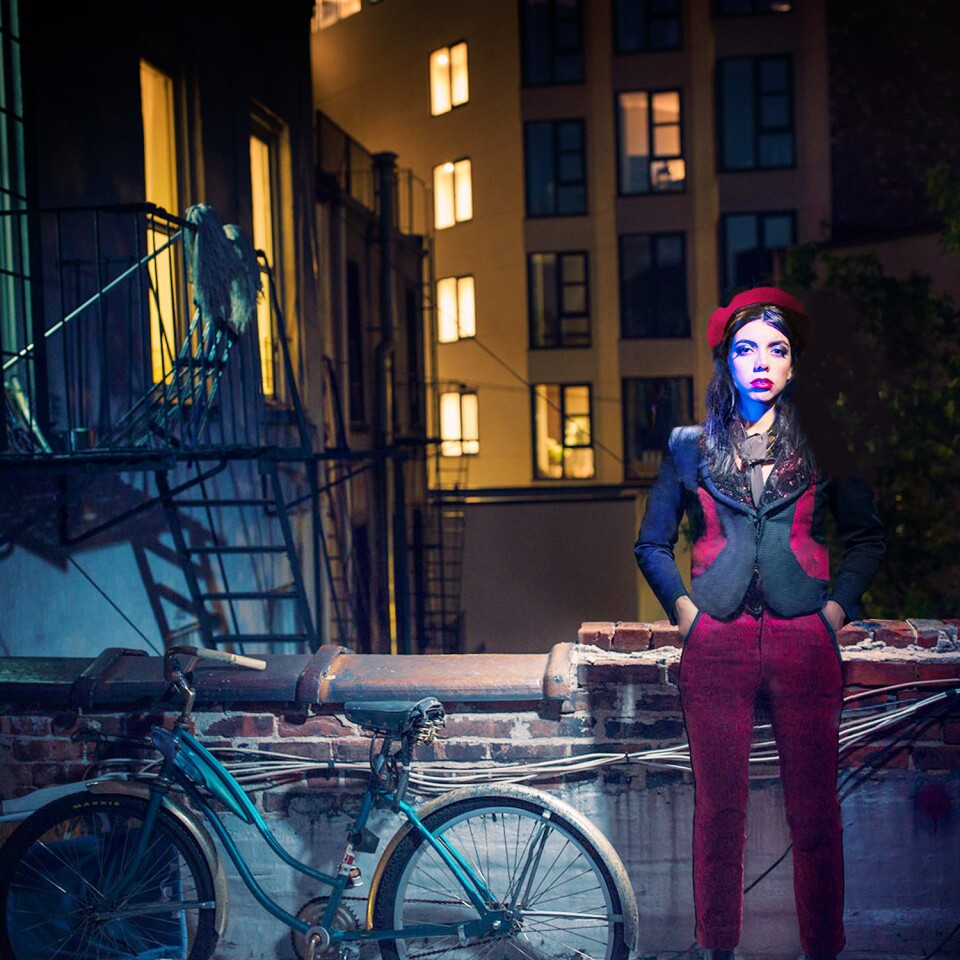Alexandra Dean's documentary, “Bombshell: The Hedy Lamarr Story,” reveals the actress' other life as an inventor; director Bryan Singer was fired and sued this week; Alynda Segarra of the band Hurray for the Riff Raff explores her Puerto Rican roots.
Director Bryan Singer's on-set antics go back decades — so why does he keep getting hired?
This week saw three developments in the Bryan Singer story:
—Fox fired the "X-Men" franchise director from his job directing the Freddie Mercury biopic, "Bohemian Rhapsody," late last week, after he failed to return to set after Thanksgiving. Singer claims he had to take care of a sick relative.
--On Thursday, a new lawsuit alleges that Singer in 2003 sexually assaulted a young man who was 17-years old when the alleged incident occurred. Singer released a statement denying the allegations and says he plans to fight them in court.
--And Singer's alma mater, USC, says the director requested that his name be removed from the school’s Division of Cinema & Media Studies until the charges are resolved.
This follows similar allegations in a lawsuit from a man named Michael Egan filed back in 2014, which were later discredited as false. Egan was sentenced to two years in prison for unrelated fraud charges.
But as Ira Madison III of The Daily Beast points out in a new article, Bryan Singer has a history of disappearing from sets, so why does he keep getting hired?
Click the play button at the top left to hear the interview!
'Bombshell' Hedy Lamarr's brilliance was discounted for decades
In the category of incredible, impossible-to-make-up stories, the real life story of Hedy Lamarr may take the cake.

She was one of the most glamorous film stars of the 1930s and '40s, and at the height of her fame was dubbed “the most beautiful woman in the world.” What remained hidden for decades was that Lamarr led a sort of double life— or really, multiple lives.
Born Hedy Kiesler in 1914 in what was then Austria-Hungary, she first fled an unhappy, early marriage and then Nazi-occupied Europe. Once in the U.S., she shed her Jewish name and identity and distanced herself from a scandalous start in the movie business to become a major film star.
But that still doesn't really tell the half of it. What wasn't known back then, and still isn't fully appreciated today, is that Lamarr was also a talented, self-taught inventor. One of her inventions, a remote-controlled torpedo that used frequency hopping, was a precursor to Bluetooth and WiFi technology we use today.
The new documentary, “Bombshell: The Hedy Lamarr Story,” written and directed by Alexandra Dean, fills in a lot of the remaining blanks in Lamarr's story. An audio recording of Lamarr herself, which Dean discovered during the making of the film, forms the backbone of the documentary.
Alexandra Dean spoke with The Frame guest host John Rabe about "Bombshell."
Interview highlights:
On Lamarr's natural inclination toward inventing:
The thing about Hedy is that she started out as an inventor — that’s her natural self. She did it with her father as a kind of playful activity. In their off hours they would take apart gadgets. They loved radios, they took apart radios. She also took apart her music box and put it back together. That was just how her brain was wired.
On the audio interview with Lamarr that Dean discovered while making the film:
At first, you’re lulled into this interesting introduction she gives you which is, "This is going to be the opposite of what you think about me." And then she unfolds it on these tapes in this way that is just so fascinating. You go into world after world that she lived in, and it’s almost like "Forrest Gump." She’s interacting with these major moments of history. She gets into scrape after scrape and escapes them, and then she does these things that you can’t even imagine a Hollywood actress trying to do in the 1930s. And then she’s ignored for it. She takes you through all of that, and I think that without her voice you just wouldn’t believe it.
On Lamarr's frequency hopping invention:
It was really this idea that if you’re going to try and remote-control a torpedo, the big problem is that the enemy can hear your radio signal and jam it. They can stop the signal from traveling between the ship and the torpedo that it’s trying to control. So what Hedy wanted to do was create a signal that couldn’t be hacked and that couldn’t be jammed. Her idea was: Why not just hop around on frequencies so that nobody knew where the signal was going to go next? If they jammed the signal, it would only be for a split second. It was the basis for frequency hopping as we use it today, which is one of the ways that we communicate over WiFi, Bluetooth, GPS and some cell phones. So it really went into many many things through the military. And that's because the military did dig [Lamarr's patent] out, give it to some contractors, one of those contractors wrote a tribute to Hedy, so we actually know that he used her patent and put it in all these important military inventions, which in turn influenced other inventions. [JOHN RABE: But they never paid her?] No, not a cent.
On Lamarr as a movie-making pioneer:
What’s so interesting about Hedy is that she gets punched and knocked down like she does with the invention, and then she gets back up, dusts herself off, and says, I’m going to make my mark on the world in a different way. There were people that had come before her, but in ‘46, when she started producing her own films, there was no actor out there producing their own films with the exception of Bette Davis, a friend of hers. In 1946, Hedy and Bette went out there and said, If the studio system is not going to work for us, we’re going to create our own films. And that was in a way just as revolutionary as saying, I can affect the outcome of World War II with my inventions.
On the film’s resonance with the current sexual harassment reckoning in Hollywood:
The world has shifted around this film and it is being received differently than I thought it would be. But it’s exhilarating because the world feels more ready for the conversation that the film kicks up, which is, Why couldn’t a woman this talented make her mark on the world the way she wanted to? Why didn’t we receive her with open arms and find out what else she could’ve invented? Who else have we ignored and erased because we were not able to accept that somebody that looked like that, or was a movie star, could also be a brilliant inventor? And that’s really all part of this #MeToo moment, I think, because what we’re saying is, women are silenced in different ways, and if we don’t explore it, what kind of talent do we lose?
"Bombshell: The Hedy Lamarr Story" airs on May 18 on most PBS stations.
Hurray for the Riff Raff's Alynda Segarra on speaking to her 'Latin soul'
Alynda Segarra, a New York-raised singer-songwriter with Puerto Rican roots, has found new meaning in her music following the devastation of Hurricane Maria.
Segarra's band, Hurray for the Riff Raff, is known for a folk-inspired sound, a style that she developed busking on the streets of New Orleans. But on the band's latest album, "The Navigator," Segarra looks at her teenage years frequenting the Nuyorican Poets Cafe in New York's East Village.
I learned how to play music not only from my father when I was younger, but I really started to play music when I was a traveling kid. A lot of other street kids I knew were playing folk music. They had acoustic instruments because they're easy to carry and they would all busk on the street. I only knew about playing in the subway from growing up in New York. But in New Orleans, playing on the street was just [getting] to be out in the fresh air.
For Segarra, "The Navigator" was a way to reflect on growing up Puerto Rican on the streets of New York City.
I really wanted to get in touch with what it meant to grow up constantly searching for the underground and the invisible world that was happening. It also was me really trying to get in touch with what it meant to be a Nuyorican woman, what it means to be a part of the diaspora.
So I created this character, Navita, who is really me when I was 17 and who was so stubborn and could not be told what to do. Creating Navita really helped me because I felt like I needed to teach her a lesson. So when you create this character and you create a storyline, you got to teach that character a lesson and you end up teaching yourself.

Segarra says the song "Pa'lante" carries a special significance for her.
It's a channel for me to remind people every night about the people of Puerto Rico, because I feel so much fear for the people on the island. And I feel so much rage about how their humanity is just getting forgotten in the aftermath of the hurricane. And it really reminds me of how I felt watching New Orleans really struggle to get back on its feet.
Segarra says Nuyorican poet Pedro Pietri was an important influence to her and her love of poetry. Pietri helped create the Nuyorican Poets Cafe in New York City.
When I was in high school, I really just loved poetry so much. It was my outlet. The poem "Puerto Rican Obituary" [by Pedro Pietri] was really important because it was talking about the struggle of Puerto Rican people to assimilate to this idea of The American Dream. And here we are with the island being so devastated and we're still not seen as American citizens — full American citizens who have fought in so many wars, who have contributed so much and built this country.

The poem "Puerto Rican Obituary" has a line that is especially significant to Segarra.
To communicate with their Latin soul. That to me really speaks to my journey with making this album. I felt like I, finally — as a 30-year-old Nuyorican woman — was able to speak to my Latino soul.
I feel like I'm speaking to the many different people that brought me to where I am today and paying my respects to them and also talking about the future of where we're going to go as a people.
To hear the full story, click on the audio player above.




